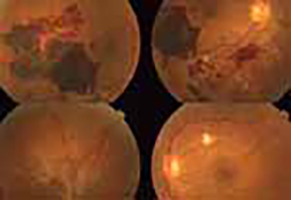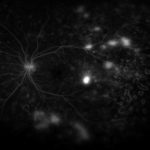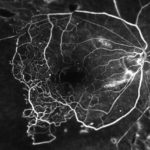Diabetic patients, often with poor control of their blood sugars, develop circulatory changes in the retinal microvasculature (veins, arteries, capillaries) which lead to retinal damage and visual loss. Damage includes hemorrhages, edema and non-perfusion of the retina.
There is a wide variation in the extent and severity of abnormalities in the diabetic’s retinal circulation. Visual loss may be mild or severe. Progression of the microcirculatory changes leads to more advanced abnormalities including vitreous hemorrhage (blood filling the eye), traction retinal detachment and neovascular glaucoma (high eye pressure).
Treatment in the early stages includes focal and pan-retinal laser photocoagulation as well as intraocular injections of anti-inflammatory and anti-neovascular medications. More complex changes may require surgical intervention to remove blood and scar tissue from the inside of the eye (vitrectomy) and repair of retinal detachment. Placement of a glaucoma valve may be required for neovascular glaucoma.
The staff, physicians and facilities of Retina Group are devoted to the treatment of these various disorders caused by Diabetes. Diagnostic facilities include wide-angle and high-resolution digital fluorescein angiography, ophthalmic computerized tomography (OCT), ultrasound evaluation, autorefraction, tonometry and ophthalmic photography.
Office-based therapeutic interventions include laser photocoagulation with binocular indirect (non-touch) and contact lens delivery systems. Intraocular injections of pharmaceuticals are performed in the office with standard ophthalmic anaesthesia and sterile preparations.
Other procedures may require operating room anaesthesia and equipment and are usually performed on an ambulatory basis. Post-operative follow up is performed in our office facilities.
The need for tight glycemic (blood sugar) control is emphasized by our staff since improved management of the systematic condition will lead to a better visual outcome. We work closely with each patient’s medical team to coordinate improved blood sugar monitoring and dietary requirements.





